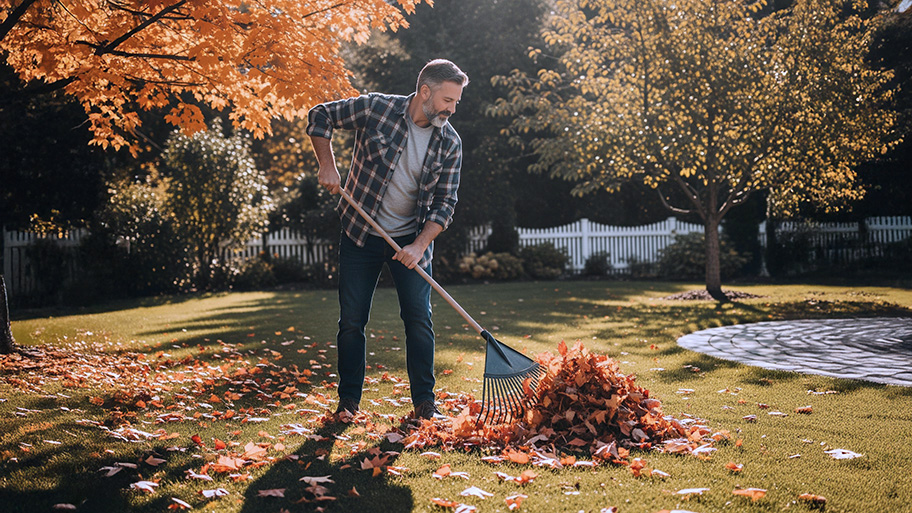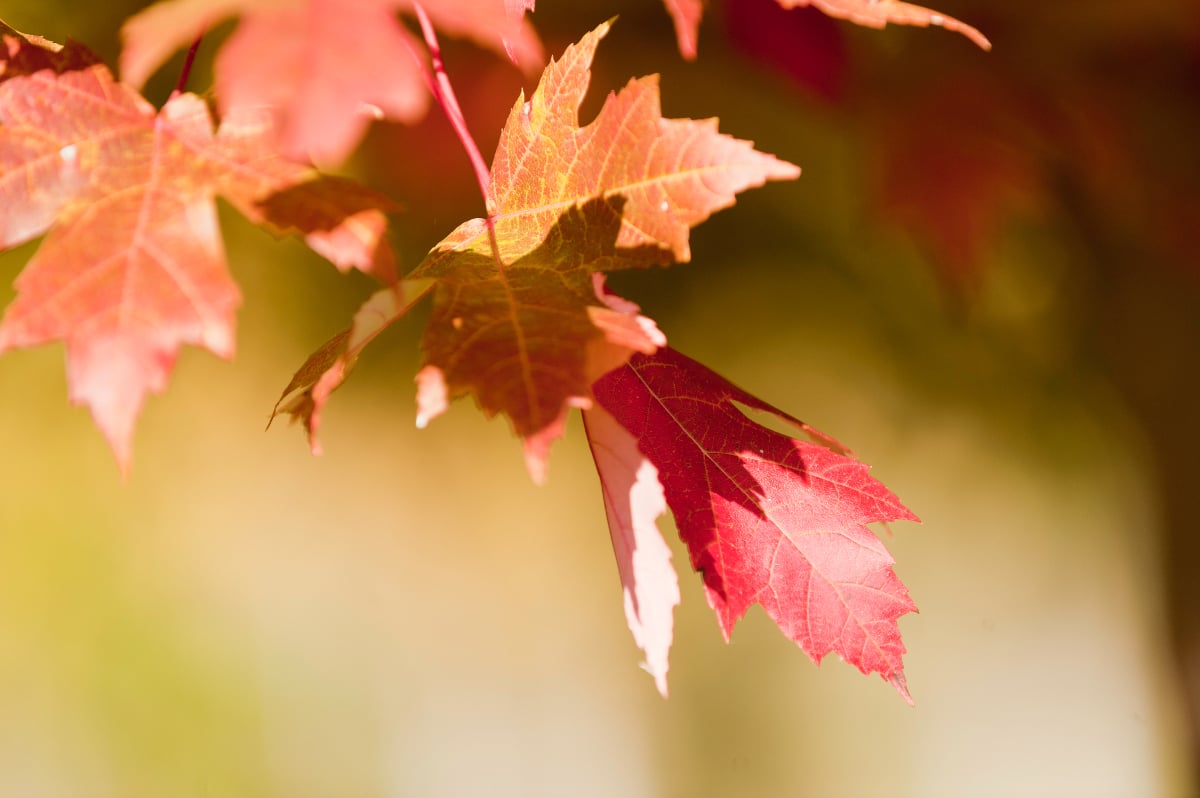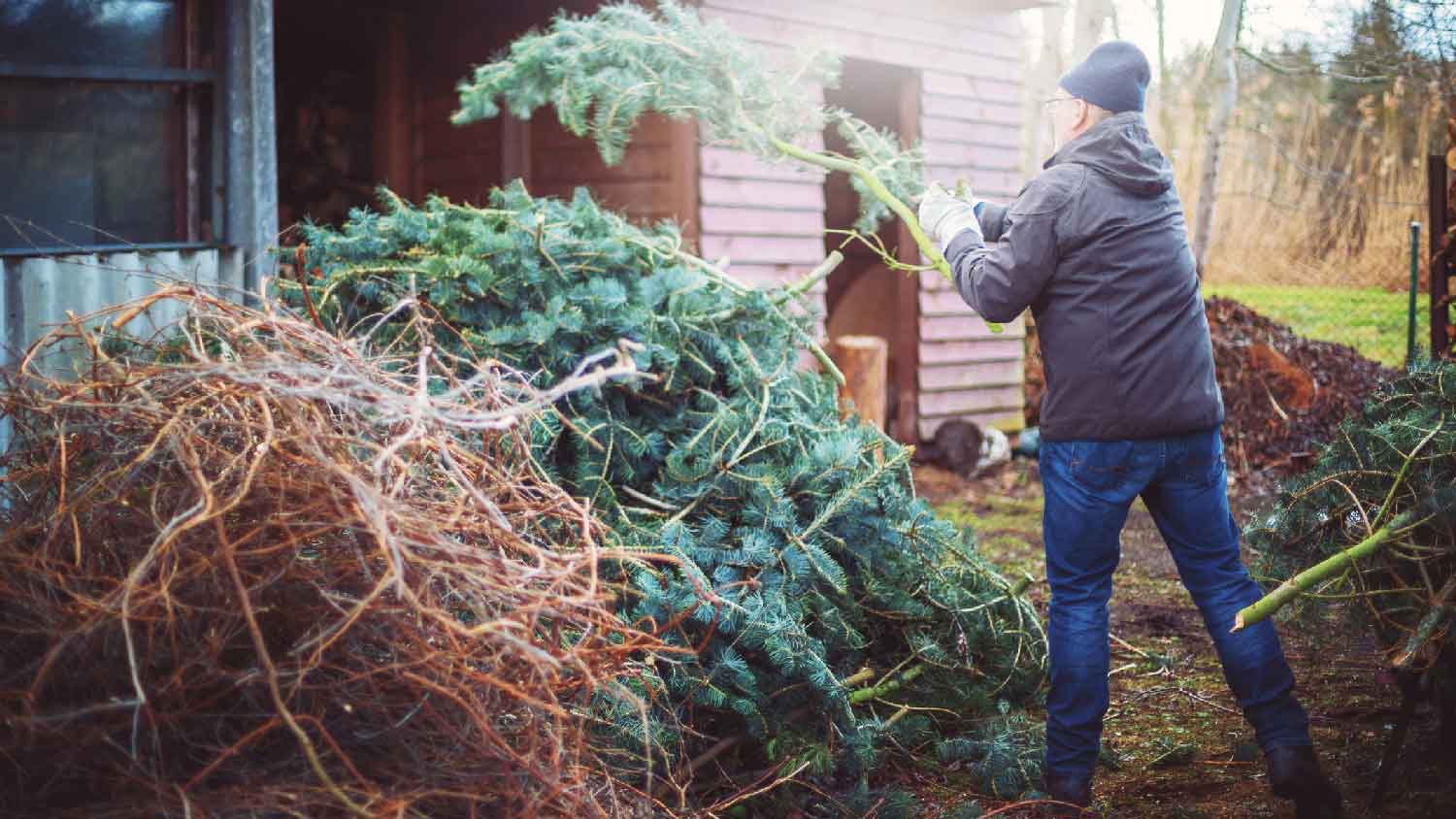
A yard cleanup can keep your lawn clean and prepare it for the next season. Find out the average yard cleanup cost and what can affect it.
Try these 4 steps to boost tree health before fall


Fall foliage is caused by a seasonal decline in the pigment chlorophyll.
Trees that change color too early may be stressed.
Insects, disease, and drought can all cause early fall foliage.
Vibrant fall colors are one of the best parts of autumn. We expect to see beautiful red, orange, and gold foliage in many cities across the country. But, the presence of fall foliage has a different meaning if it arrives well before the summer is over.
Early fall foliage likely means that trees are experiencing stress. If you see this in your own backyard, your trees may be asking for help. Let’s consider what causes stress, how to identify a sick tree, and four steps you can take to keep your trees healthy.
During the fall season, the leaves on trees (also known as foliage) begin to change color, turning from green to stunning hues of orange, red, and yellow. This beautiful phenomenon is often called “fall foliage.”
The arrival of fall brings shorter days and cooler temperatures, which signals leaves to stop making food. This results in the gradual decrease of chlorophyll, a pigment in plants that gives them their green color. Without the presence of chlorophyll, leaves begin to sport the vibrant, eye-catching colors that so many deem as the hallmark of fall.
After you’ve enjoyed the spectacle and the leaves have fallen onto your yard, you can hire a leaf removal company near you to help with seasonal clean-up.
Trees that don’t get enough water, are plagued by insects or diseases, or are stressed for other reasons may stop producing chlorophyll, causing them to change color before the summer season ends.
The rich red color of leaves is caused by pigments called anthocyanins. When tree leaves turn red in the fall, it’s a good thing, as anthocyanins protectively extend the life of the leaves. However, your leaves turning red in the summer usually mean they’re under some sort of stress. Common stressors include insects, disease, drought, lack of nutrients, soil compaction, and more.
A hot summer can take its toll on trees for years to come. Even after recovering, trees may still be weak and need extra attention for the remainder of the season. Check trees now to help them make it through the remaining hot days.
You can identify a sick tree by conducting a thorough examination of all its parts. Here are some telltale signs to look out for.
Trunk and bark: Closely examine the tree’s trunk and bark for any signs of decay or rotting. Vertical cracks, stripped layers of bark, and fungal growth can all be signs of an unhealthy tree.
Roots: While the roots are least vulnerable since they’re hidden underground, it’s still important to check for any visible signs of damage such as decay or fungi, severed roots, soil compaction, and small branches sprouting from the base of the tree.
Branches and twigs: A healthy tree should have an abundance of leaves and strong branches. On the other hand, a tree with dead or weak branches could be a sign of disease or pests.
Leaves: Not only should leaves be the right color for the season, but they should also show no signs of wilting or drooping. Leaf spots, patches, and holes can all indicate stress and sickness.
Take care of your trees now by following these four easy steps below, so you can enjoy the fall color well after summer ends.

Protect trees from disease, insects, and unpredictable weather by giving them the nutrients they need. As long as your trees aren’t experiencing drought, you can apply a slow-release fertilizer according to directions.
Water trees once a week from March until October, and twice a week during periods of no or little rain. Only water the area under the tree’s branches, known as the drip zone. Avoid directly irrigating the trunk.
Make sure you’re not overwatering by using the “soup can” trick. Place an empty soup can near the tree inside the sprinkler pattern and run the sprinkler very slowly over several hours until 2 to 3 inches has collected in the can.
Apply wood chips, shredded leaves, pine needles, or compost to help trees maintain moisture where they need it—their roots. Spread mulch in a wide circle, no more than 3-inches deep, around the tree to conserve water. Pull mulch back from the trunk of the tree like a donut, not like a volcano.
Think your trees are stressed? Make an appointment with a certified arborist to learn how to care for, protect and enhance the vibrant color of fall for seasons to come.
Bob Meoak contributed to this piece.
Pro M did an excellent job. They removed 2 unwanted trees and trimmed all of the others. Cleanup was perfect.
Jefferson painting did a great job removing flaky old paint, and repainting our whole house. Great results!
Ike really knows his business, and has guys working for him that are also excellent.
Sergio and his crew are great. My driveway was removed and replaced with stamped concrete. The price was very competitive with other contractors. It was done in a timely manner. Cleaned up the area everyday they were on site.
Installation was delayed at first by one week because permits were Not pulled while I was gone. Permits only pulled a few days after my return. Scheduled installation as a one day job, but not completed in one day. Another delay of one week before crew could return to finish installation....
We decided to have our master bathroom remodeled to make it safer after a slip and fall injury occurred while stepping out of our large tub/shower combo. We interviewed several companies and chose America’s Dream Homeworks because we were impressed with what our salesman, Neil, had to offer...
They did such a good job. The first tree was removed with barely a stump left and the larger tree was trimmed so well that it made the driveway look bigger. They cleaned up afterwards and they did the whole job efficiently and quickly.
We had a hot tub in our back yard that was installed by the previous owner, and it did not follow code guidelines for safety. We asked Darren to cap off the electrical lines that led out to the tub in the yard, as well as some landscape lighting that also was not up to code. Darren was able...
We had to have most of the job redone. Including removing door frames because they painted the wrong color. Instead of leaving the wall paint as it was, they painted over it, leaving the color different from the rest of the walls.
The job done was not for a driveway, but the construction of a 80 ft long retaining wall needed to hold back soil and water from a slope on my property adjacent to the sidewalk. The work included removing large amounts of dirt, installing a french drain, and creating a gravel foundation....
From average costs to expert advice, get all the answers you need to get your job done.

A yard cleanup can keep your lawn clean and prepare it for the next season. Find out the average yard cleanup cost and what can affect it.

Autumn leaves are beautiful but also leave quite a mess to clean up. This guide will help you budget for your leaf removal cost this fall.

Allowing leaves to decompose naturally can add vital nutrients back into your soil. Learn whether you should rake leaves and why.

Leaves are bound to fall, but how long will they stay there? Learn how long it takes for leaves to decompose and how you can speed up the process.

If your yard has seen better days, a professional clean-up may be in order. Use these lawn care questions to prep yourself for a conversation with a pro.

Determining how to clean up fallen leaves can be a real chore. Consider time, tools, and environment when choosing between raking or mulching leaves.